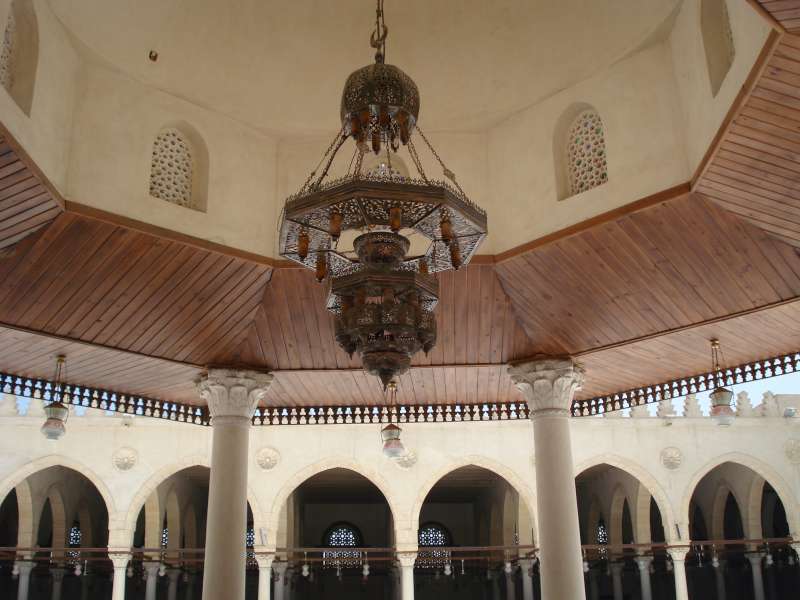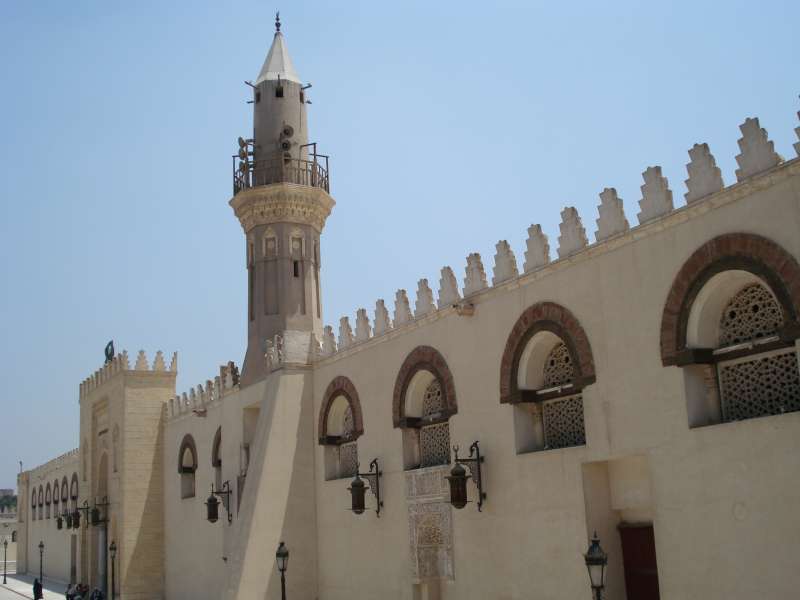
World Monument Photography
July 27, 2024
Mosque Amr ibn Al-As is the first mosque built in Egypt and the entire continent of Africa. It was built by Amr ibn Al-As in 642 AD. Its style was similar to that of the first mosque in Medina and was expanded and renovated over the years. The last renovation was completed in 2006 AD. It is still used and is usually completely packed for Friday prayers.

Amr ibn Al-As was one of the contemporaries of the Prophet Muhammad (pbuh). He was born in 573 AD and belonged to the Banu Sahm clan of Ban Quraish of Mecca. Like many other Quraish chiefs, he was originally opposed to Islam and commanded the Quraish army in 625 AD during the battle of Uhud, where the Muslims were defeated. In 630 AD, Khalid ibn Waleed and Amr ibn Al-As decided to leave Quraish and join Muhammad where they rode from Mecca to Medina on horse back and announced their conversion to Islam. He served as the leader of the Muslim army in the battle of Dhat as-Salasil and was key to spreading the word of Islam to Oman, southeastern area of the Arabian peninsula. He was later briefly made governor of that region.
After Prophet Muhammad’s (pbuh) death, he served in the battles of Ajnadayn, Yarmouk, and the fall of Damascus. In 639, he suggested to Umar ibn Al-Khattab (the Amir, or leader, of the Muslims at the time) to invade Egypt, which he did with 4,000 men. After taking the towns of Pelusium (or Al-Farama in Arabic) and beating the Byzantine army near Bilbais, Amr proceeded to the fort of Babylon (present day Cairo). Next he proceeded to Heliopolis. With the fall of Heliopolis, much of the country, with the exception of Alexandria, fell to Amr ibn Al-As. After a 14 month siege, a treaty was signed in November 641 AD where Alexandria agreed to be under Islam’s dominion. It is widely believed that the Coptic Christians, who were persecuted by the Byzantines, were key in helping move Alexandria from Byzantine control to Arab control. Amr ibn Al-As founded the new city of Fustat (literally means the “tented city”) and built the first mosque in Egypt, which was named after him. Al-Fustat became the new capital of Egypt, instead of Alexandria.
Enranged by the fall of Egypt, the Byzantine Emperor Constantine III was determined to re-take the city of Alexandria and sent a large force to occupy the city towards the end of 645. After a brief battle, they were able to take control of the city. Amr ibn Al-As, who was in Mecca, was quickly recalled to duty to take command of the Arab forces in Egypt. In 646, with a force of 15,000, Amr ibn Al-As met the Byzantine forces headed by Manuel in a small fortified town of Nikiou, about two-thirds of the way from Alexandria to Fustat. Badly outnumbered, the Arabs fought hard and were able to prevail and gave chase to the disarrayed Byzantine forces that headed back to Alexandria. The Byzantine forces closed the gates of Alexandria. Infuriated by this, Amr ibn Al-As completely demolished the walls of Alexandria and was able to retake the city. The Byzantines would never again attempt to retake the city. Egypt would from that day forward have a clear Arab character.

The original mosque of Amr ibn Al-As measured 29 meters by 17 meters. During the rule of Caliph Al-Mamoun in the 9th century, governor ibn Taher extended the mosque adding a new area to the southwestern side, giving it a total size of 120 meters by 112 meters. This was the last extension of the mosque. During the Fatimid period, the mosque was burned in the great Al-Fustat Fire in 1175 AD. Al-Fustat was burned by Vizier Shawer to prevent the crusaders from invading the city. The fire continued for 54 days. Later in 1179 AD, Saladin rebuilt the mosque. Again in 1796 AD, fearing French occupation led by Napoleon, the Mamluk leader Mourad Bey demolished the mosque and rebuilt it again later that same year. He used this opportunity to redecorate and the mosque. In 1906, during the rule of Khedive Abbas Helmy II, the mosque was restored entirely. The works were done by the Arab Antiques Preservation committee. At the southern corner, there is a mausoleum that is believed to belong the Abduallah, the son of Amr ibn Al-As, although no source can confirm that claim. In 2006, the mosque was again renovated and restored adding several lamps, gardens, and repainting the walls.
The mosque has historically been a center of religious learning, some 600 years before the construction of Al-Azhar. Important religious figures taught in the mosque, including Muhammad ibn Idris Al Shafie.